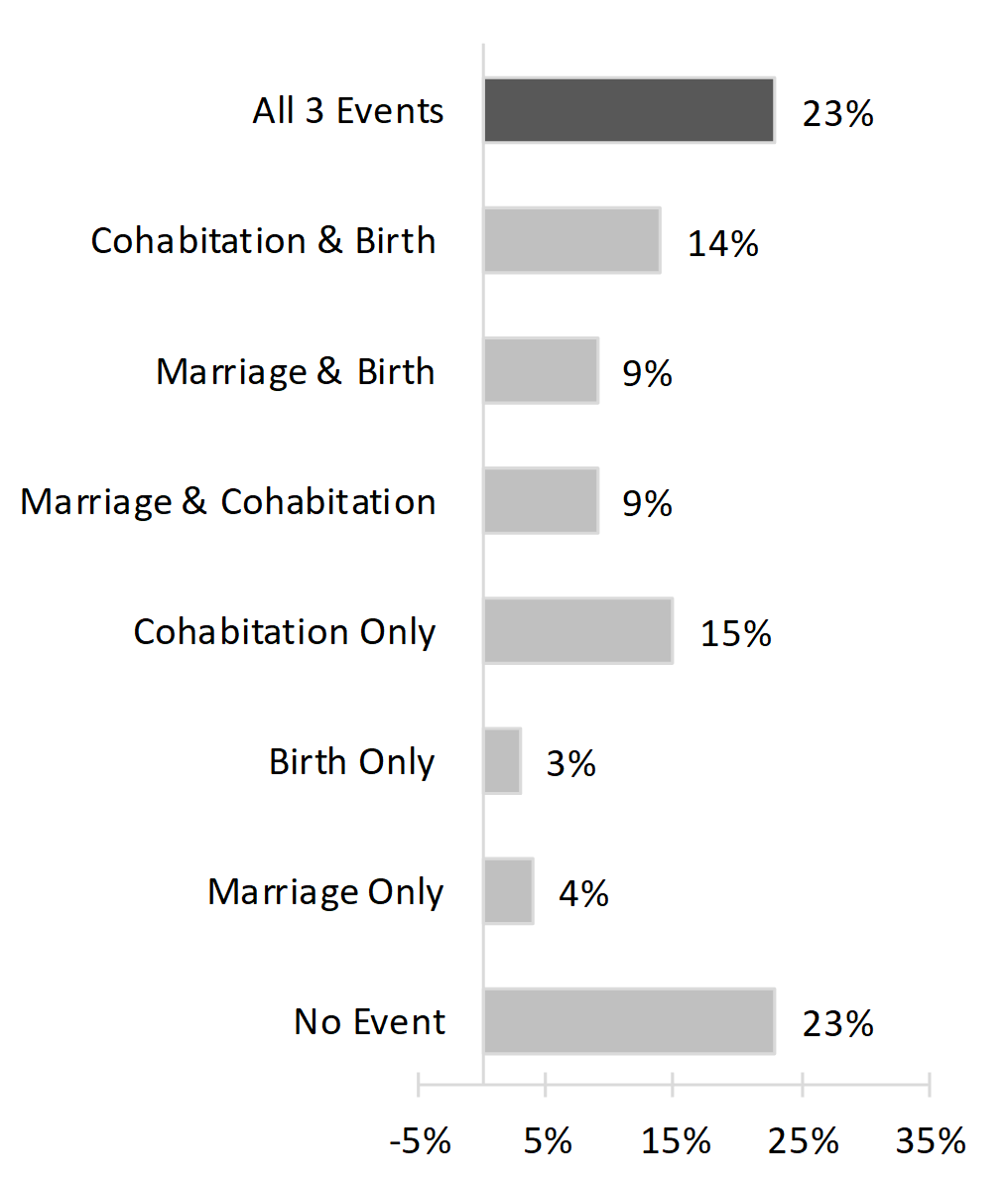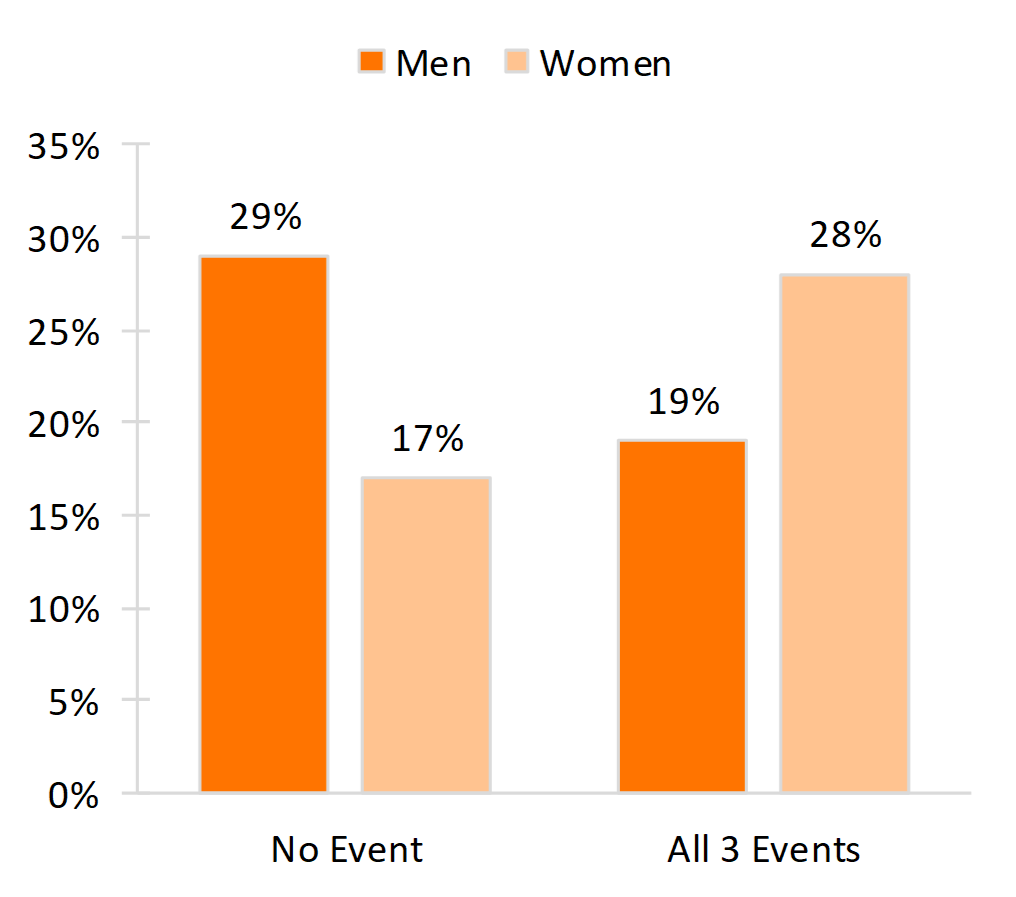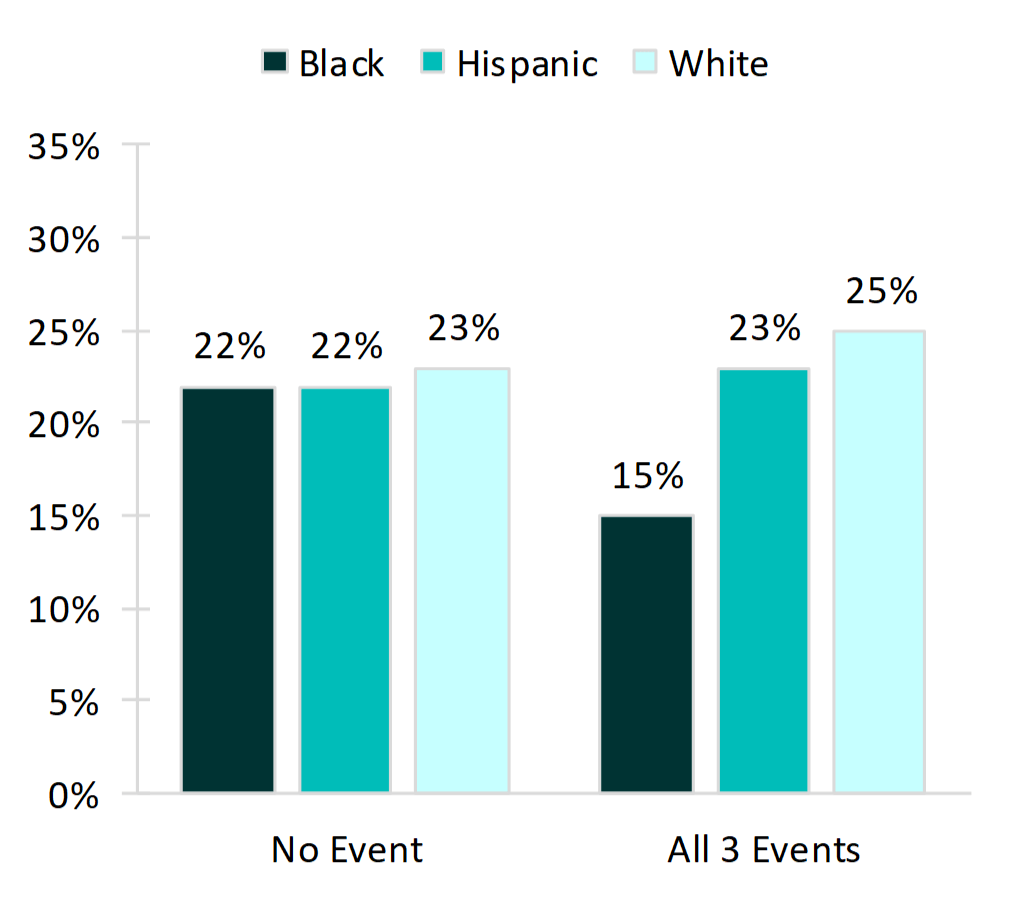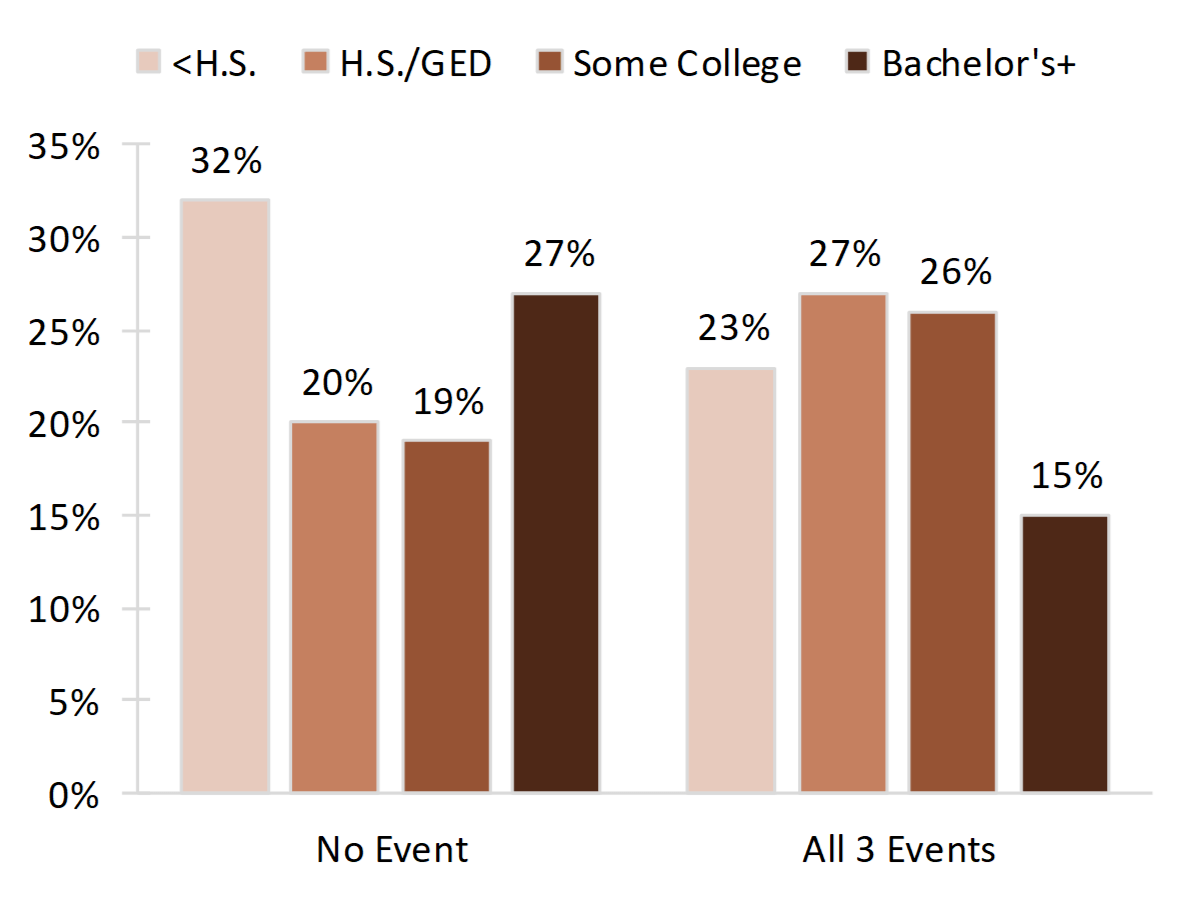Young Adulthood: Number & Type of Family Formation Events
Family Profile No. 23, 2018
Author: Paul Hemez
Becoming a parent and forming a coresidential union through marriage or cohabitation are important markers of adulthood (FP- 16-07; FP-17-02; FP-17-22). However, not all young adults experience the same number and types of family formation events. Focusing on marriage, cohabitation, and parenthood, this Family Profile examines the number of family formation events young adults experienced by their 30th birthday. We then present the shares who experienced no family formation events and who experienced all three events across key sociodemographic characteristics. Estimates are drawn from the first 17 rounds of National Longitudinal Survey of Youth 1997 and represent the experiences of men and women born between 1980 and 1984.
Number and Types of Events Experienced
- More than three-quarters (77%) of men and women born between 1980 and 1984 had experienced at least one adult family formation event before their 30th birthday—whether cohabitation, parenthood, and/or marriage.
- Among those who only experienced one family formation event, cohabitation was most common.
- Among young adults who experienced two events, the combination of cohabitation and parenthood was most common.
- Overall, there was a bimodal distribution in the family formation experiences of young adults, as the two most common classifications were having experienced no events (23%) or having experienced all three events (23%).
Figure 1. Distribution of Number and Types of Family Formation Events Experienced Before Age 30

Gender
- The most common pattern for men was to have experienced none of the family formation events (cohabitation, marriage, or parenthood), as nearly three in ten did not report any of these events by their 30th birthday.
- Among women, the most common pattern of events was to experience all three events by age 30.
- About two out of ten women did not report any family event by their 30th birthday.
Figure 2. Percentage of Young Adults Who Experienced None or All Three Family Formation Events Before Age 30, by Gender

Race/Ethnicity
- The share of men and women who experienced no family formation events during young adulthood did not vary across racial and ethnic groups (about 22%).
- Nearly one in seven Blacks experienced a cohabitation, a birth, and a marriage during young adulthood, compared to nearly one in four Hispanics (23%) and Whites (25%).
- Among Whites and Hispanics, experiencing all three events by age 30 was the most common combination of family formation events, but for Blacks the most common combination was experiencing cohabitation and parenthood (28%, not shown).
Figure 3. Percentage of Young Adults Who Experienced None or All Three Family Formation Events Before Age 30, by Race and Ethnicity

Educational Attainment
- Young adults with the lowest and highest educational levels most often did not experience any family event by age 30.
- One-third of young adults with less than a high school degree (32%), and one-fourth of those with a Bachelor’s degree (27%) had no family events in young adulthood.
- Young adults who had a high school degree (or GED) or an Associate’s degree most often experienced all three family events.
- About one in four of those with a high school degree, along with those holding an Associate’s degree, experienced cohabitation, parenthood, and marriage by age 30.
Figure 4. Percentage of Young Adults Who Experienced None or All Three Family Formation Events Before Age 30, by Educational Attainment

Data Source
- Bureau of Labor Statistics, U.S. Department of Labor. (2017). National Longitudinal Survey of Youth 1997 cohort, 1997-2015 (rounds 1-17). Produced by the National Opinion Research Center, the University of Chicago and distributed by the Center for Human Resource Research, The Ohio State University. Columbus, OH.
References
- Anderson, L. (2016). Median age at first marriage, 2014. Family Profiles, FP-16-07. Bowling Green, OH: National Center for Family & Demographic Research.https://www.bgsu.edu/ncfmr/resources/data/family-profiles/anderson-payne-median-age-first-marriage-fp-16-07.html
- Eickmeyer, K. J., Payne, K. K., Brown, S. L., & Manning, W. D. (2017). Crossover in the median age at first marriage and birth: Thirty-five years of change. Family Profiles, FP-17-22. Bowling Green, OH: National Center for Family & Demographic Research. https://www.bgsu.edu/ncfmr/resources/data/family- profiles/eickmeyer-payne-brown-manning-crossover-age-first-marriage-birth-fp-17-22.html
- Hemez, P., & Manning, W. D. (2017). Over twenty-five years of change in cohabitation experience in the U.S., 1987-2013. Family Profiles, FP-17-02. Bowling Green, OH: National Center for Family & Demographic Research. https://www.bgsu.edu/ncfmr/resources/data/family-profiles/hemez-manning-25- years-change-cohabitation-fp-17-02.html
Suggested Citation
- Hemez, P. (2018). Young adulthood: Number & type of family formation events. Family Profiles, FP-18-23. Bowling Green, OH: National Center for Family & Marriage Research. https://doi.org/10.25035/ncfmr/fp-18-23

This project is supported with assistance from Bowling Green State University. From 2007 to 2013, support was also provided by the U.S. Department of Health and Human Services, Office of the Assistant Secretary for Planning and Evaluation. The opinions and conclusions expressed herein are solely those of the author(s) and should not be construed as representing the opinions or policy of any agency of the state or federal government.
Updated: 04/06/2021 01:31PM


